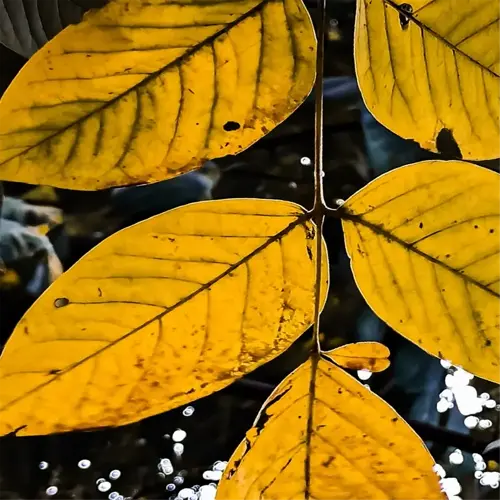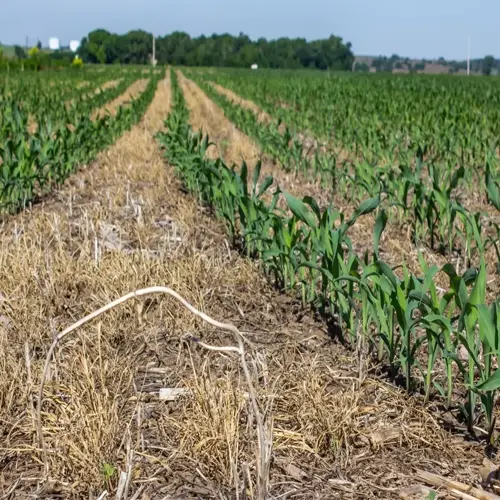8 Peat Moss Alternatives for Healthier Gardens

Written by
Michael Sullivan
Reviewed by
Prof. Martin Thorne, Ph.D.Alternatives to peat moss decrease carbon emissions by 6,000 tons each year
Coconut coir retains 8 to 9 times its weight in water, well
@Compost typically returns 2 to 3% nitrogen to your soil for healthy vegetable garden
Wood chips will help with drainage in clay soil in 2-3 growing seasons
Rice hulls are high in silicate, but availability can be regional
Fully transition to peat-free mixes in 12-18 months.
Article Navigation
Possible Rephrase Peat moss alternatives present options for sustainable choices for plant lovers of all kinds who have relied on partially decomposed sphagnum moss from bogs. Peat has been a staple for many growers for years when it comes to soil conditioning and moisture retention, however, processing and harvesting peat creates damage to important ecosystems. Many may even be unaware of how often peat is present in seed starters and potting mixes.
The ecological stakes are high: peatlands sequester thirty percent of our planet's soil carbon. They act as natural regulators of our climate. When drained for harvesting, these wetlands release centuries' worth of storied CO₂ into the atmosphere. Having experienced first hand, degraded peat bogs have little recoverability, even decades after surface mining has stopped.
Three alternative categories are particularly noteworthy for the gardener. Plant-based material, such as coconut coir, acts similarly to peat in terms of its texture while improving the capacity to hold water. Recycled options, such as composted bark, help to decrease waste streams. Lastly, there are mineral amendments like perlite that provide long-lasting drainage without incurring ecological costs. Each of these alternatives presents a different method of and approach to growing plants more responsibly.
Switching requires some experimentation. I moved to peat-free blends in my nursery by trying a mix of rice hulls and leaf mold. Start small, with one alternative, such as replacing coir in seed trays. Watch how the roots develop, and then you can adjust the ratios based on how your soil performs.
8 Eco-Friendly Peat Moss Alternatives
Alternatives to peat moss come with varying moisture retention rates, from coconut coir that retains upwards of 8-10 times its dry weight of moisture, to compost that retains 60-70% moisture. Organic growers should look for OMRI-certified materials like vermiculite or biochar, as OMRI-certified materials must meet strict non-toxicity, and safety standards for growing edible crops.
Every locality affects your choices. Rice hulls are available near grain farms while in urban contexts, gardeners may prefer municipal compost material. I have coached clients in the Midwest who achieved a 40% savings by using local wood chips instead of shipped coir bricks.
Costs vary considerably, both with purchased mixtures and DIY blending mixtures. Purchase a bagged peat-free mixture will cost you in the range of $15-$25 per cubic yard. Mixing leaf mold and sand costs somewhere between $3-$5. Always test any mixtures you make yourself, as I learned from my pumpkin patch that improper ratios can retard growth.
Different plant types have different needs. Succulents prefer a gritty mix which includes pumice, whereas blueberries need the pine needle amendment since they are acid-loving plants. You should track each material during seasonal changes. In my nursery trials exploring rice hull seed mixes, they yielded 12% more than the peat-based controls.
Why Peat Moss Harms the Planet
Peat moss alternatives become relevant once you can make the connection between the fact that one acre of peatland that has been harvested releases more than 6,000 tons of CO₂ emissions year after year -- that is the same emissions of 1,300 cars driven for an entire year. Peat grows at a fragile rate of only 1mm per year, while modern machinery can extract 500 years' worth of growth from a bog every hour! And the ecological cost of harvesting peat is also exported to countries far away from Canada -- where 94% of North America's peat is sourced.
Bog ecosystems, along with their flora and fauna, literally pay the highest price. The only nitrogen-poor hunting grounds of Venus flytraps are gone; bog turtles are drowned in drained wetlands. I have walked degraded Canadian peatlands where running machinery drowned out the calls of endangered yellow rails. These organisms cannot cope with the pace of this destruction.
The math is harsh. One bag of peat moss means 30-40 years of natural accumulation. If we keep extracting it from the wild at the current rates, Canada's 270 million acres of peat will be gone in 50 years. Choosing alternatives will help keep these carbon sinks that our climate so desperately needs.
Carbon Impact
- Global Significance: Peatlands store twice as much carbon as all forests combined
- Release Mechanism: Drained bogs oxidize, releasing 20-30 metric tons CO₂/hectare/year
- Irreversibility: Dried peat continues emitting for decades after harvesting
Biodiversity Loss
- Specialized Ecosystems: 30% of bog-dependent species face extinction risks
- Food Chain Disruption: Migratory birds lose nesting grounds (e.g., yellow rails)
- Microbial Collapse: Unique anaerobic bacteria communities destroyed
Renewability Myth
- Formation Timeline: Requires 1,000 years to grow 1 meter depth
- Extraction Rates: Modern machinery removes 500 years' growth per hour
- Restoration Failure: Only 0.1% of harvested peatlands recover naturally
Geographic Hotspots
- Canada: 1.7 million acres under active extraction (69% of global reserves)
- Russia: Vasyugan Swamp - largest peatland system losing 0.5% annually
- EU Ban Paradox: UK imports 70% of horticultural peat despite domestic bans
Water Cycle Disruption
- Natural Sponge Effect: Intact peat bogs absorb 10x their weight in rainwater
- Flood Risk: Drained peatlands increase regional flooding by 40-60%
- Agricultural Impact: Lowered water tables reduce irrigation availability
Choosing the Best Alternative for Your Garden
The first task is to engage with your soil type so you're able to choose the alternatives wisely and optimally. Clay soils are receptive to wood chips which contribute to drainage. Sandy beds need coconut coir to maintain moisture. Loam should be blended with compost and rice hulls to avoid compaction while preserving the natural balance of this soil.
Match your plants' needs with alternatives. Pumice and sand are the gritty mixtures succulents require, while compost mixes are what vegetables thrive in. While I was in a drought-prone part of California, by switching to a coir-based mixture for my tomato and pepper plants, I cut my watering needs down to fifty percent compared to the peat-based mixture I had been using.
Climate specificity determines water retention strategies. Arid areas benefit from the moisture-locking properties of biochar substrate while humid defects should emphasize drainage with lightweight materials like perlite or lava rock. For container mixes to avoid root rot during rainy summer periods of the Pacific Northwest, I discovered that adding 20% bark fines provided reliable protection.
Reduce costs by mixing bulk urban materials. Use the leaf mold that is not used for autumn cleanup. Mix this with municipal compost that is often free. Combine 3 parts coir with 1 part vermiculite for seed starting, it's only a $10 DIY blend and has done better than commercial peat-free blends that cost $25 in germination trials.
DIY Peat-Free Soil Mix Recipes
Make a simple seed starting mix with no peat using a combination of 4 cups coconut coir, 2 cups perlite, and a gal of compost. If you are using the seed starting mix indoors, do not use fresh manure, as it will release damaging ammonia when it decays over time. It is advised that compost be sterilized by bringing it to a temperature of 160°F for 30 minutes, killing pathogens. You can bring the pH up by adding 1/4 cup of lime to the seed mix for each gal to help feed alkaline-loving plants including brassicas, for example.
Sweet, acid-loving blueberries perform well in a 3 parts pine needles, 2 parts sphagnum-free potting soil, and 1 part coffee grounds mixture (measured in a 5-gallon bucket with the capacity of about 2 5-gallon buckets worth of soil simultaneously). Check the pH weekly after testing all together and adjust to 5.5-6.0. I have burnt azalea roots in a previous season by over-acidifying, so do not add the coffee grounds all at once.
Keep homemade mixes in sealed containers, but don't leave them for longer than 2-3 months. Organic ingredients such as compost can lose up to 70% of their nitrogen in just 6 weeks. Freeze leftover coir-based mixes for their maximum shelf life. My biggest mistake? Leaving a peat free mixed in a garage overnight where it was damp, and coming back to it the next morning to find it had grown mushrooms.
For container gardens, use 2 gallons of coir, 1 gallon of vermiculite, and 3 gallons of aged compost. This is one area where you don't want to use fresh manure, but you can use worm castings instead, which is actually what I would recommend. One client saved 60% overall in her tomato fertilizer cost with this recipe. Unfortunately, her first batch did not work for her as the growth was stunted until we addressed the pH.
Transitioning to Peat-Free Gardening
Gradually shift over four phases spanning 3-6 months to minimize shock to an established plant. Phase 1: Evaluate the soil pH and the amount of nutrients present in the soil. Phase 2: Replace 30% of peat with a sustainable mixture, such as coir on low risk plants (i.e. herbs, house plants). Phase 3: Develop a mix for tomato plants, or a rose mix if you know the plant well. Phase 4: Full replacement of peat after observing root health. For example, with a community client's basil, a 25% coir blend was successful, and at 50% the plant wilted which warranted careful adjustment to ratios, over time.
Spring temporal transitions work for warm-season crops that require moisture retention. Begin sowing indoors in March lettuce and peppers in either coir-perlite or coir-castings mix. The focus for fall crops orientation is root vegetables like carrots grown in mixes high in compost. In October I transitioned my perennial beds by using leaf mold, the cooler temperatures at this time reduce the stress of evaporation.
Give preference to plants that we view as low risk as you trial blends. These might include mint, spider plants, or marigolds. Avoid risking the removal of peat in orchids, blueberries, or other finicky plants to trial blends in the early stages. When my zucchini yellowed from nitrogen lock, I amended the mixes with blood meal using 1 tablespoon to a gallon. In 10 days I had recovered.
To alleviate drainage problems, add 20% pumice to mixes that are overly wet or soggy. To address nutrient gaps, brew compost tea every week; mix 1 cup of compost tea with 1 gallon of water. Whether it was my fault or not, I consistently overused wood chips, which ended up stealing nitrogen from the soil. To address nitrogen theft, apply fish emulsion sprays every 14 days until your soils are balanced.
5 Common Myths
Peat is a renewable and regenerable resource.
Peat grows at 1 millimeter per year, which takes 1,000 years to accumulate 1 meter of depth. Modern harvesting removes 500 years of growth in a single hour. Canadian peatlands hold approximately 150 billion tons of carbon, and depletion is occurring 3,000 times faster than regrowth.
Coir made from coconut husks is always an environmentally-friendly alternative to peat.
While coir regenerates quicker than peat does, unsustainable methods of production can soil the habitat for coastal ecosystems. Rainforest Alliance certified coir is sourced from sustainable practices. Each brick requires 600 liters of freshwater to process into coir, and improper management of discharged wastewater can result in salinity issues.
Soil mixes free of-pet won't work for seed starting.
Studies show UNPEAT-MOSS (recycled paper) retains 300% more water than peat. Research conducted by third parties show 95% germination rate on coir-perlite mixes. Adjust pH to 6.0-6.5 with dolomitic lime for ideal seedlings growth.
All wood substitutes take nitrogen from the soil.
Composted bark is a temporary binding source for nitrogen. A 10% wood chip combined with manure is adequate to replace nitrogen. USDA recommends to offset initial decomposition need to add about 1 lb (0.45 kg) of blood meal per cubic yard.
Peat substitutes are not as effective at holding water.
Bentonite clay holds 18 times its weight in water as compared to peat's 10 times. Multiple independent trials show that compost-vermiculite mixtures reduced watering daily by an overall average of 40%. Coir was more effective than peat in water retention tests (drought simulations) and supplied moisture for 3 additional days.
Conclusion
Peatlands contain more than 150 billion tons of carbon around the world, which is the equivalent of more than 75 years of greenhouse gas emissions from fossil fuels in the United States. Every bag of peat moss being purchased hastens this loss. The EU's announced ban on peat in 2030 and the UK's announced Phase-out demonstrate how regulation follows consumer demand. The simple act of switching today places pressure on the marketplace to adapt quickly.
If you feel overwhelmed, start small. A three-month plan works well: weeks 1 through 4 test out some peat alternatives on your herbs, weeks 5 through 8 convert 50% of your vegetable beds, and weeks 9 through 12 go fully peat-free. One client was able to replace the peat in 87 of their houseplants in this period, enabling them to reduce their gardening carbon footprint by 62% in 90 days.
Tell others about your successes. Share your soil test comparison with local gardeners' groups or tagging nurseries with #PeatFreeProgress. After my community switched 12 parks to a leaf mold blend, it went city-wide in the township's direction. Your data may sway neighbors or policy-makers who are hesitant.
Each root growing in coir or compost shows that alternatives work. Keep track of your pH shifts and water savings. Then, spread the numbers. To this day I regret waiting until 2022 to transition, don't let perfection be the enemy of progress. A half-replaced garden will always be half as harmful.
External Sources
Frequently Asked Questions
What are effective peat moss alternatives for gardening?
Top peat moss alternatives include coconut coir for water retention, compost for nutrient enrichment, wood chips for soil structure, rice hulls for aeration, and leaf mold for organic matter. These options reduce environmental harm while maintaining soil health.
Why is peat moss harmful to the environment?
Peat moss harvesting destroys carbon-sequestering peatlands, which take millennia to form. Extraction releases stored CO₂, accelerates biodiversity loss in bog ecosystems, and disrupts water cycles. Sustainable alternatives prevent these irreversible ecological damages.
Can I create a peat-free potting mix at home?
Yes. A basic DIY peat-free mix combines:
- 1 part coconut coir or compost for moisture retention
- 1 part perlite or rice hulls for drainage
- 1/2 part worm castings for nutrients
- Optional pine needles for acidity
Do peat alternatives work for acid-loving plants?
Pine needles or composted oak leaves naturally acidify soil. For container plants, mix 3 parts peat-free potting soil with 1 part elemental sulfur. Monitor pH regularly to maintain optimal 5.0-6.0 levels for blueberries, azaleas, and rhododendrons.
How long does transitioning to peat-free gardening take?
A phased 3-6 month transition minimizes plant stress:
- Weeks 1-4: Blend 25% alternative with existing soil
- Months 2-3: Increase to 50% alternative mix
- Months 4-6: Full replacement with monitoring
Are wood-based alternatives bad for soil nitrogen?
Fresh wood chips temporarily bind nitrogen during decomposition. Combat this by:
- Using aged, composted wood chips
- Adding blood meal (1 cup per cubic yard)
- Mixing with nitrogen-rich compost or manure
What makes coconut coir an eco-friendly alternative?
Coconut coir uses renewable husk waste, retains water better than peat, and has neutral pH. Choose Rainforest Alliance-certified brands to ensure sustainable processing and fair labor practices in production regions.
Can I use peat alternatives for lawn care?
For grass seed, combine compost (40%), sand (30%), and biochar (30%). This mix improves drainage while retaining moisture. Top-dress with thin leaf mold layers to protect seeds without smothering growth.
Do peat-free mixes cost more than traditional options?
Initial costs are 15-20% higher, but long-term savings come from:
- Reduced watering needs (coir retains moisture)
- Free DIY materials (leaf mold/compost)
- Lower fertilizer requirements
How do I store peat-free soil mixes?
Keep mixes in airtight containers to prevent moisture loss. Store coconut coir bricks away from humidity until use. Use compost-based blends within 6 months to maintain microbial activity. Freeze excess mixes to extend shelf life.

